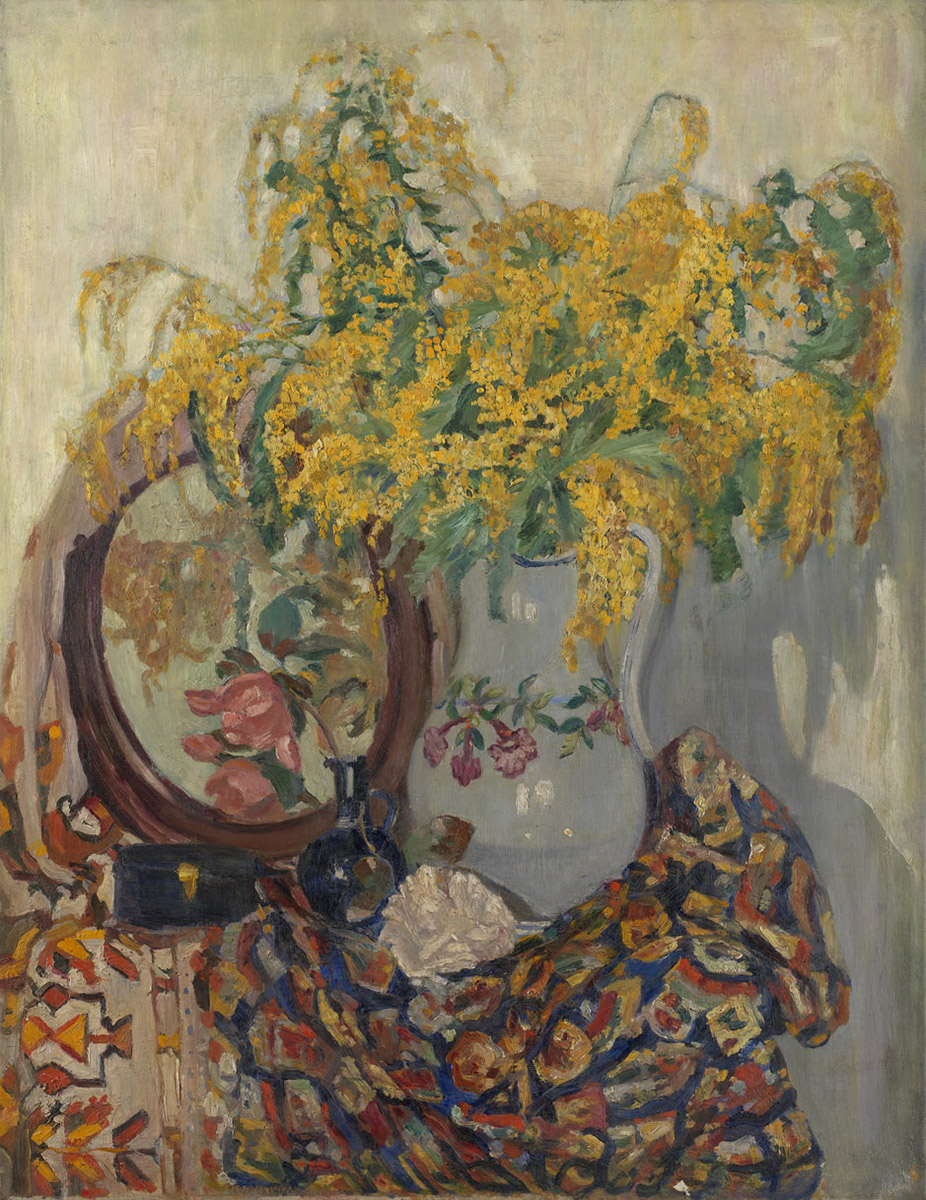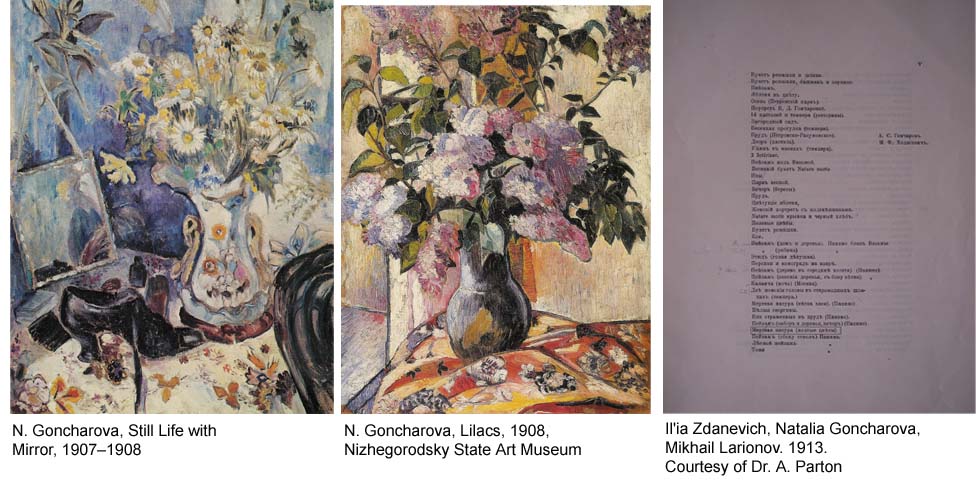MacDougall Auctions 8 June 2009
8 June 2009

* 344. GONCHAROVA, NATALIA 1881-1962
Still Life with Mimosa
Oil on canvas, 100 by 77 cm.
400,000-600,000 pounds
Provenance: Private collection, UK.
Authenticity certificate from the expert Evgeniy Kovtun.
Authenticity certificate from Mrs. Denise Bazetoux.
Authenticity certificate from Dr. Anthony Parton.
Technical analysis by Dr. Nicholas Eastaugh, November 2008.
Literature: The work is listed in Il’ia Zdanevich, Natalia Goncharova, Mikhail Larionov. Moscow: A. Miunster, 1913, p. V, listed as “still life (yellow flowers)”.
The work will be included in the forthcoming monograph Natalia Goncharova: Art and Design, prepared by Dr. Anthony Parton and due to be published by the The Antique Collectors’ Club in December 2009, illustration No. 19. The work will be included in the forthcoming Catalogue raisonne de l’oeuvre de Nathalia Gontcharova, being prepared by Mrs. Denise Bazetoux.
Presented here for the sale Still life with Mimosa is an early work by Natalia Goncharova that was probably executed in 1906–1907 – at a point in time when the artist was progressing from a naturalistic to a Symbolist mode of artistic practice. Already in her earlier still lifes such as Still life with Melon Goncharova has demonstrated her capacity to work in a loosely naturalistic manner but increasingly she found herself drawn towards a type of Still life painting that was geared more to the evocation of an “atmosphere” or “mood”. Whilst Still life with Mimosa recalls the naturalist works in terms of both style (note the detailed decoration of the jug and its mimetic highlights) and imagery (the blue glass perfume jar), the painting lacks the rather prosaic mood of the earlier works and, instead, creates an intimate and haunting atmosphere through carefully chosen objects, shadows, textures and colours.
This is a painting which the Nabis would have called intimiste and in my view, therefore, it postdates works such as Still life with Melon and relates more closely to the still life paintings of the first and second generation of Russian symbolists which we know preoccupied Goncharova in the period 1906–1907. Borisov-Musatov, for example, evoked particular atmospheres by employing the rhetoric of decorative jugs, vases, sculptures and decorative textiles.
Compelling comparisons may also be made between Still life with Mimosa and the intimate singleflower studies of Vrubel (private collection), the evocative still lifes of Sapunov and the brightly coloured flower pieces by Golovin. To my mind, then, it is the mood that Goncharova expresses in this painting that is all important in helping us to date it.
We cannot be certain of Goncharova’s precise stylistic development at this point in time but in my view she subsequently moved away from the naturalism of Still life with Mimosa to embrace a more impressionist approach which subsequently gave way to a prolonged interest in Fauve aesthetics and particularly in the still life paintings of Matisse. If I am correct in my evaluation then it must have been works such as Still life with Mirror that followed the execution of Still life with Mimosa. Although the paintwork in this still life is considerably looser and more impressionist than that found in Still life with Mimosa we may observe a particularly close relationship between the paintings in terms of their composition and imagery (the mirror, reflections, decorative textiles, decorated china jug, perfume jars and personal objects).
Indeed, it seems to me that Still life with Mimosa represents a kind of “prototype” for Goncharova since the compositional format of the painting and the motifs explored within it may be found again and again in subsequent still lifes by the artist. From this point onwards
Goncharova’s still life practice revolved around the representation of jugs and textiles of all varieties containing bouquets of flowers and leaves of diverse kinds. In my view these works all postdate Still life with Mimosa and, hence, are to some extent derived from it.
Although we know of no other still life paintings by Goncharova on the theme of mimosa, we do know that this was a flower for which Goncharova had a special affection for when commissioned to make designs for the interior decoration of a chapel in France, she represented the Virgin Mary holding mimosa.
Dr. Anthony Parton, Durham University

Notes on symbols:
* Indicates 5% Import Duty Charge applies.
Ω Indicates 20% Import Duty Charge applies.
§ Indicates Artist's Resale Right applies.
† Indicates Standard VAT scheme applies, and the rate of 20% VAT will be charged on both hammer price and premium.